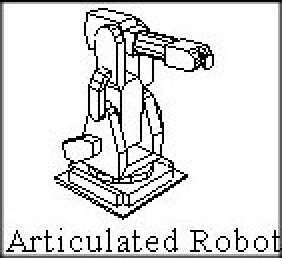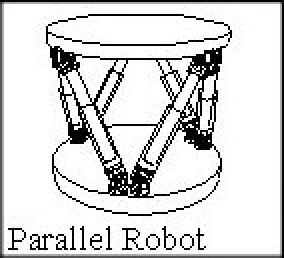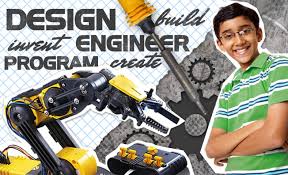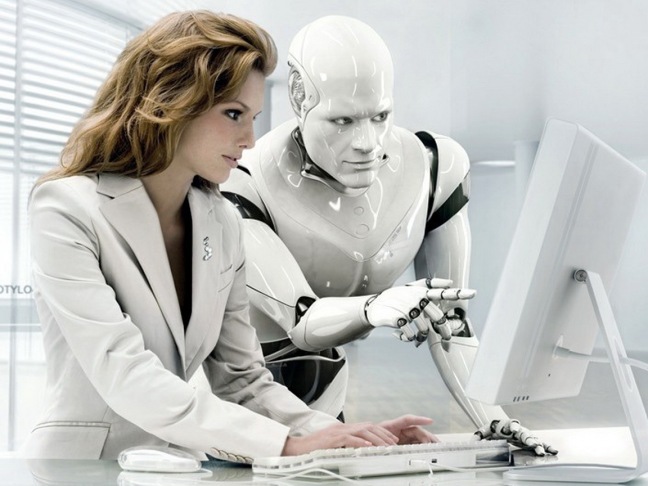
What is Robotics:
Robotics is the branch of “Technology” that deals with the
1) Design of Robot
2) Construction of Robot
3) Operation of Robot
4) Application of Robots
5) Computer systems for their control
6) Sensory feedback
7) Information processing
Institution Of Robotics:-
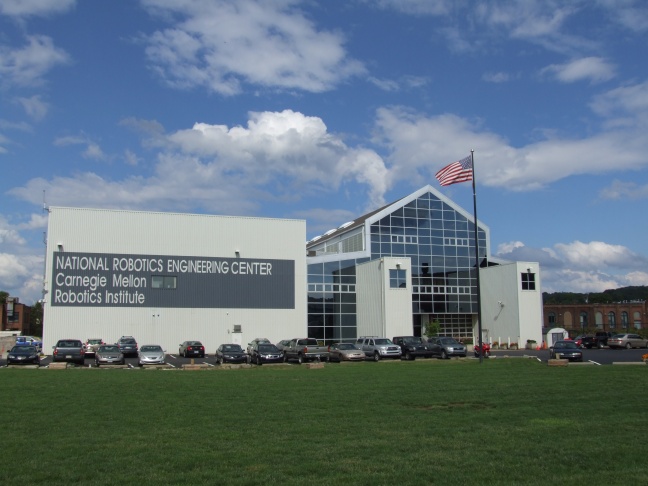
The Robotics Institute (RI) is a division of the School of Computer Science at Carnegie Mellon University in Pittsburgh, Pennsylvania, United States. It is considered to be one of the leading centers of robotics research in the world.
The RI was established in 1979, and was the first robotics department at any US university. In 1988 CMU became the first university in the world offering a PhD. in Robotics.
In 2012, the total number of people in the RI (faculty, staff, students, postdoc, visitors) was over 500, and the RI annual budget was over $6 making the RI one of the largest robotics research organizations in the world.
The RI occupies facilities on the Carnegie Mellon main campus as well as in the Lawrenceville and Hazelwood neighborhoods of Pittsburgh, totaling almost 200,000 sq. ft of indoor space and 40 acres of outdoor test facilities
The design of a given robotic system will often incorporate principles of mechanical engineering, electronic engineering, and computer science (particularly artificial intelligence). The study of biological systems often plays a key role in the systems engineering of a project and also forms the field of bionics. The mathematical expression of a biological system may give rise to control algorithms for example, or by observing how a process is handled by nature, for example the bifocal vision system, an analogous system may be formed using electronics.
Specification of Robots:
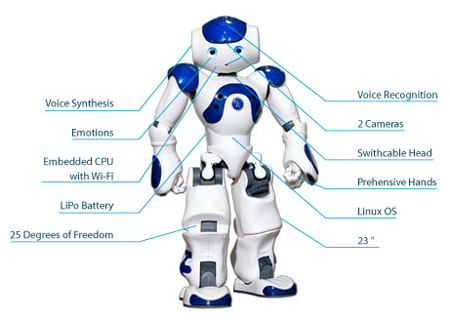
The concept of creating machines that can operate autonomously dates back to classical times, but research into the functionality and potential uses of robots did not grow substantially until the 20th century. Throughout history, robotics has been often seen to mimic human behavior, and often manage tasks in a similar fashion. Today, robotics is a rapidly growing field, as technological advances continue; research, design, and building new robots serve various practical purposes, whether domestically, commercially, or militarily. Many robots do jobs that are hazardous to people such as defusing bombs, mines and exploring shipwrecks.
Uses of Robots:
Robots are used in many fields and some of them are:
1. Vehicle and car factories
2. Precision cutting, oxygen cutting, lasers, etc.
3. Mounting circuits on electronic devices (i.e. mobile phones)
4. Working where there might be danger (i.e nuclear leaks, bomb disposal)
5. Surgeons are performing robotic-assisted surgeries that, among other things, can equalize little jiggles and movements of a surgeon’s hands when doing delicate procedures, such as microscopically aided surgery or brain surgery, etc.
6. Other manufacturing, such as certain repetitive steps in assembly lines or for painting products so humans don’t breathe the over spray or have to work with respirators on, working in the heat of drying and treating ovens on wood products, etc.
7. Mail delivery to various mail stations throughout the buildings in large corporations. (They follow routes marked with ultra violet paint).
8. To assist police and SWAT teams in dangerous situations, such as with hostages or in shoot outs and stand offs. They can be sent to the scene to draw fire, open doors, “see” the environment from a closer view point, or look in windows with cameras, etc.
9. Bomb diffusion, land mine detection, and military operations where they are used as in #8 above.
10. Remote procedures by a surgeon or other doctor who is unable to be there to perform the surgery in far away via “Robotics” hands.
Types of Robots:
- Cartesian robot /Gantry robot: Used for pick and place work, application of sealant, assembly operations, handling machine tools and arc welding. It’s a robot whose arm has three prismatic joints, whose axes are coincident with a Cartesian coordinator.
- Cylindrical robot: Used for assembly operations, handling at machine tools, spot welding, and handling at die casting machines. It’s a robot whose axes form a cylindrical coordinate system.
- Spherical/Polar robot: Used for handling at machine tools, spot welding, die casting, fettering machines, gas welding and arc welding. It’s a robot whose axes form a polar coordinate system.
- SCARA robot: Used for pick and place work, application of sealant, assembly operations and handling machine tools. It’s a robot which has two parallel rotary joints to provide compliance in a plane.
- Articulated robot: Used for assembly operations, die casting, fettering machines, gas welding, arc welding and spray painting. It’s a robot whose arm has at least three rotary joints.
- Parallel robot: One use is a mobile platform handling cockpit flight simulators. It’s a robot whose arms have concurrent prismatic or rotary joints.
Future of Robots:
Robots work tirelessly in factories, often around the clock, to churn out cars, computers and pack bags of cookies into boxes. They never complain, ask for breaks or demand bigger paychecks. In fact, robotic technology is advancing so quickly that machines are taking on a growing list of responsibilities once handled exclusively by humans. Over the past few years, they’ve started to help doctors with surgery, fetch products in warehouses and milk dairy cows.
Google is hoping to create robots that can take on even more responsibilities. Last week, the company disclosed that it acquired seven start-ups focused on robotics and that it was busy cobbling those pieces into a business.
( according to the New York Times)
Robotic engineers are designing the next generation of robots to look, feel and act more human, to make it easier for us to warm up to a cold machine.
Realistic looking hair and skin with embedded sensors will allow robots to react naturally in their environment. For example, a robot that senses your touch on the shoulder and turns to greet you.
Subtle actions by robots that typically go unnoticed between people, help bring them to life and can also relay non verbal communication.
Artificial eyes that move and blink. Slight chest movements that simulate breathing. Man made muscles to change facial expressions. These are all must have attributes for the socially acceptable robots of the future.
Larking Dangers:
Robots with knives could attack humans accidentally.Robots helping with everyday tasks around the home could accidentally inflict deadly wounds on humans, scientists have warned.
Homes of the future are often depicted as efficient spaces in which robots are programmed to carry out mundane domestic tasks, from cleaning to carrying out simple repairs or even preparing dinner.
But films like I, Robot, have imagined a world in which man-made machines programmed to serve humans turn against their creators – and a group of scientists has said this could happen.
German researchers have warned that robots in the home could prove dangerous – particularly when armed with sharp objects.
To discover what would happen if a robot wielding a sharp tool – such as a knife or a screw driver – accidentally struck a person, researchers at the Institute of Robotics and Mechatronics, part of the national aerospace agency in Wessling, south-east Germany, programmed a mechanical arm holding a variety of instruments to strike a series of substances that mimicked human tissue.
The robot stabbed and punctured a lump of silicone, a pig’s leg and even a brave human volunteer’s arm – causing damage that could potentially be lethal, according to the scientists.
Conclusion:
The general trend for computers seems to be faster processing speed, greater memory capacity and so on. One would assume that the robots of the future would become closer and closer to the decision-making ability of humans and also more independent. Presently the most powerful computers can’t match the mental ability of a low-grade animal. It will be a long time until we’re having conversations with androids and have them do all our housework. Another difficult design aspect about androids is their ability to walk around on two legs like humans. A robot with biped movement is much more difficult to build then a robot with, say, wheels to move around with.
The reason for this is that walking takes so much balance. When you lift your leg to take a step you instinctively shift your weight to the other side by just the right amount and are constantly alternating your center of gravity to compensate for the varying degrees of leg support. If you were to simply lift your leg with the rest of your body remaining perfectly still you would likely fall down. Try a simple test by standing with one shoulder and one leg against a wall. Now lift your outer leg and observe as you start to fall over.

Indeed, the human skeletal and muscular systems are complicated for many reasons. For now, robots will most likely be manufactured for a limited number of distinct tasks such as painting, welding or lifting. Presumably, once robots have the ability perform a much wider array of tasks, and voice recognition software improves such that computers can interpret complicated sentences in varying accents, we may in fact see robots doing our housework and carrying out other tasks in the physical world.







